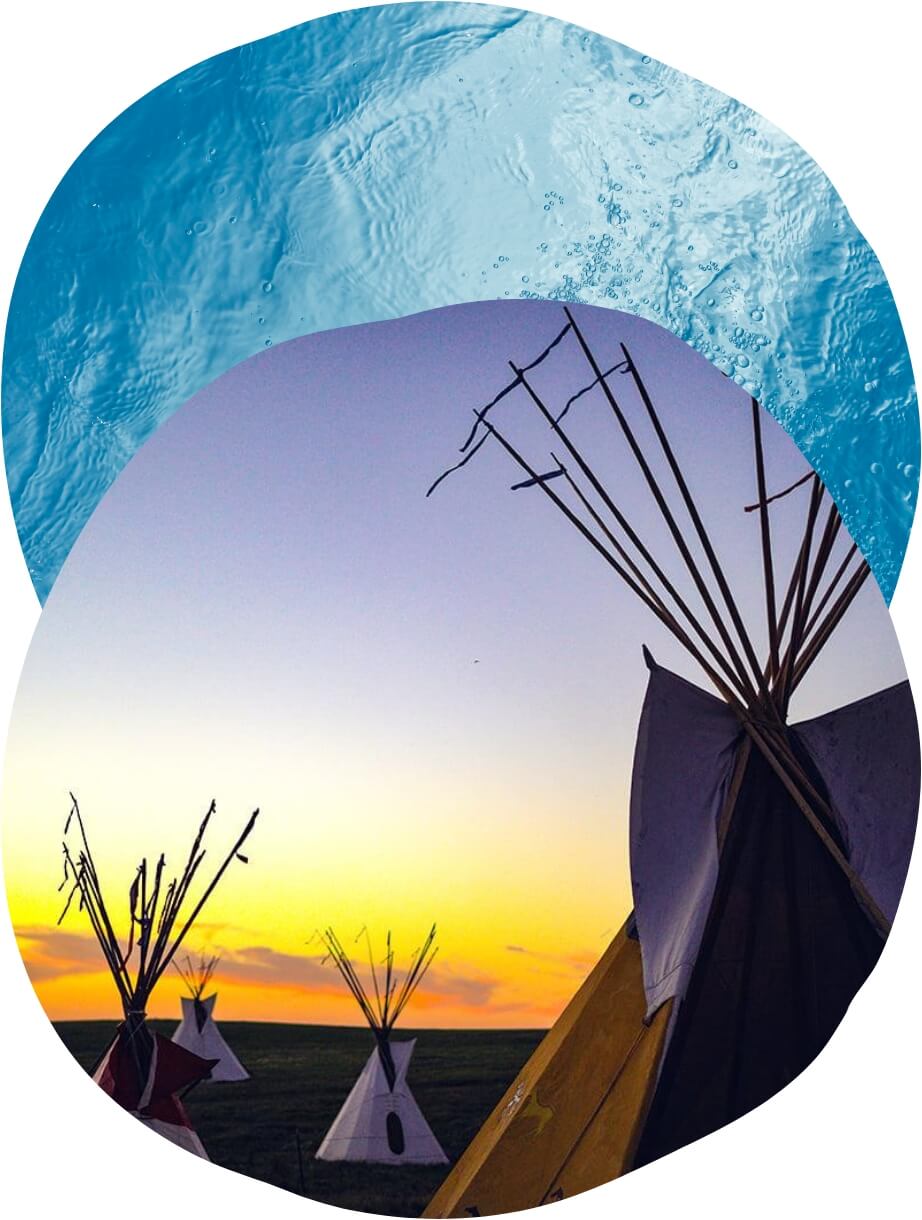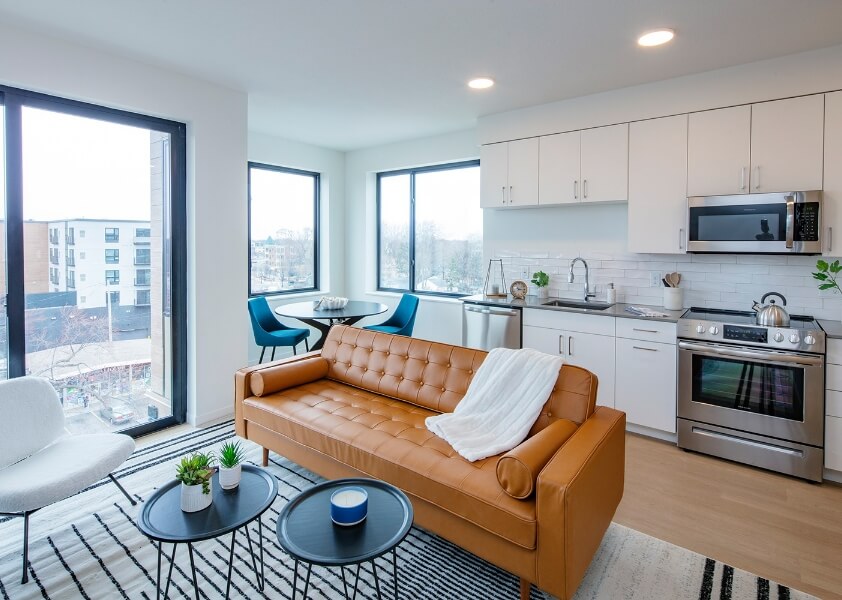We start with the site itself. This land is important to the Dakota people; it is near several sacred sites — Bdoté, Mni Owé Sni and Oĥéyawahi — and the Minnehaha Creek. Our name highlights and honors that connection to the land and the water: “Wakpada” is a Dakota word meaning “creek.”
Apply today!
- Get $1,000 off a 12-month lease for all studios, or enjoy a $500 gift card when you lease any other available home!
- Don’t wait - contact our leasing team today for details and to schedule your private tour!

Culture & Arts
Connecting Wakpada to the Community
The work to create Wakpada is more than the story of a structure, it’s an effort to connect the project, its residents, and visitors to the community and to the history of the land. That work begins with a recognition that, like much of today’s Minnesota, we are on Dakota land. It also includes a commitment to connect those who live, work, and play here – including the Hall-Sweeney development team – to that historical truth, and the rich, vibrant culture that flourished here long before the first settlers arrived.


Connect
To help us in this work, we reached out to individuals who have worked to preserve Dakota culture and advocate for the Dakota people. We connected with Powwow Grounds and its owner Bob Rice, Angela Two Stars of All My Relations art gallery, the Native American Community Development Institute, and many of the vendors from the Four Sisters Farmers Market. We sought to learn through events such as the Wakan Tipi festival and from the wealth of knowledge generously shared by Ramona Kitto Stately and Ethan Neerdaels as they guided us on an exploration of the sacred sites within walking distance of Wakpada.

Educate
During these learning opportunities, we had many conversations about if and how it would be appropriate to honor the Dakota heritage, something that remains unknown to much of the larger community. It was our strong desire that we find appropriate, positive ways to remember the Dakota people’s history and culture, but also benefit their future by involving American Indians in the development and planning of our project.
Early on, we met Šišóka Dúta. Šišóka teaches the Dakota language at the University of Minnesota and has been a leader in the effort to preserve the Dakota language. Through our conversations with Šišóka and Ethan Neerdaels, we gained a better understanding of the oral tradition of the Dakota people. We learned that their language is foundational to Dakota culture, and that centuries of forced cultural assimilation and attacks have tragically reduced the number of native Dakota speakers. Šišóka guided our naming process for the building, and further honored us when he joined our project as an investor.
Advocate
We encourage you to explore Wakpada and its community!
Among the elements we’re most proud to showcase are:

Public art plaza featuring a sculpture, artistic panels and sidewalk stamping designed and executed by the talented Angela Two Stars (Sisseton Wahpeton Dakota).

Gordon Coons (Lac Courte Oreilles Band of Lake Superior Chippewa Indians)’ mural installation in the fitness center that communicates a story of the Makwa, or “bear” in Ojibwe, and a man, and how the Makwa helps the man transition into a healer through his teachings.

Brian Dow (Red Lake Band of Chippewa Indians)’s paintings in our community "Zoom rooms" that are rooted in the Indian way of life.

Nae-Dah-Ness Rose Greene (Leech Lake Ojibwe)’s nature photography that graces our five elevator lobbies.

Jordan Iwan (Opaskwayak Cree)’s magnificent photos of Christine Falls and Gooseberry Falls in our Main Lobby and sixth floor Community Room.

Floor plan names written and pronounced in the Dakota language. Audio recordings of each name can be found on our website.

A native landscape with dual-language (Dakota/English) signage describing the uses of each plant in Dakota culture.
As a development team, we are committed to providing annual support for local Native American initiatives and organizations, such as the Land Back group and Dakota Language non-profit.
We approach this work with humility, openness to new ideas and the realization that this work is a continuous process.